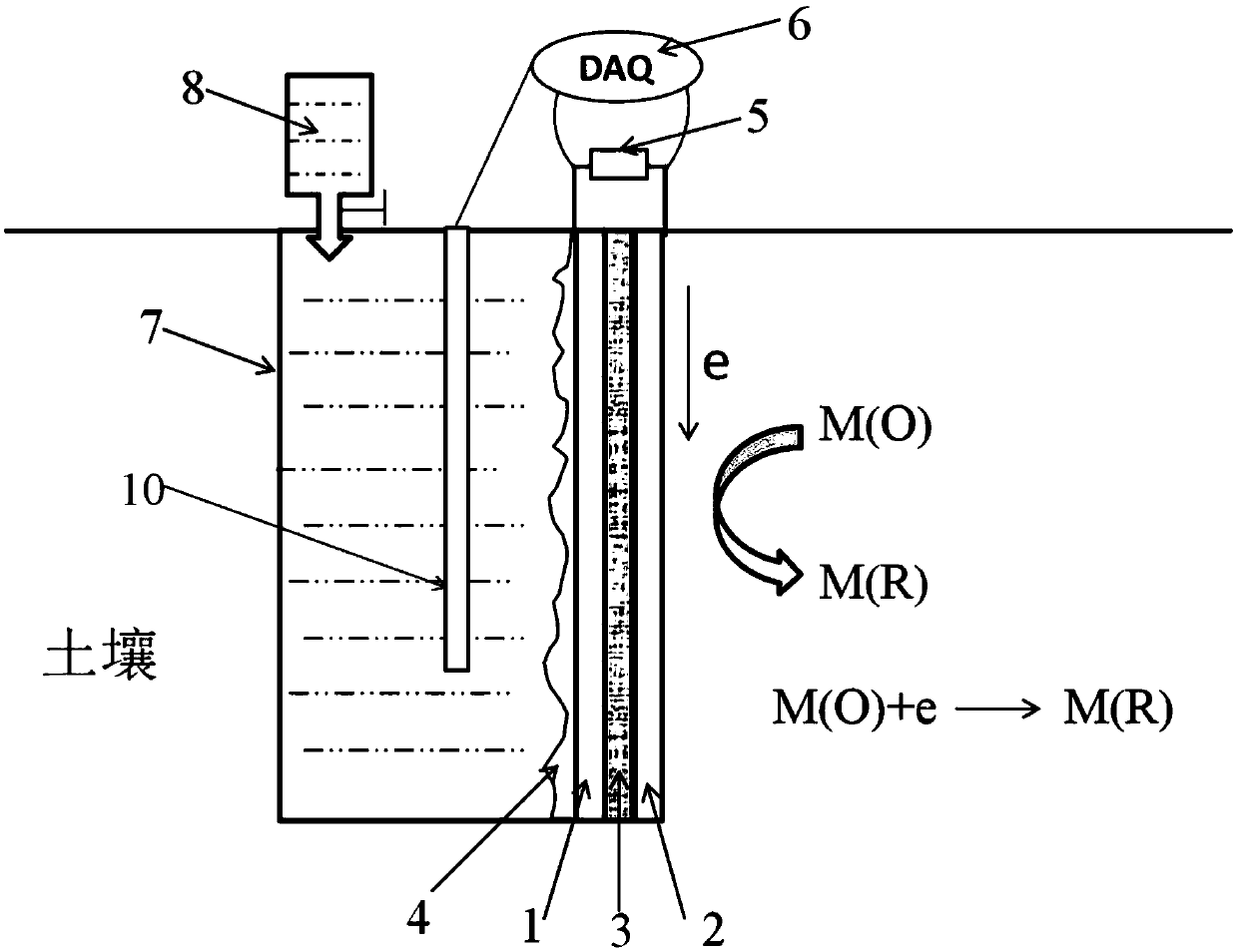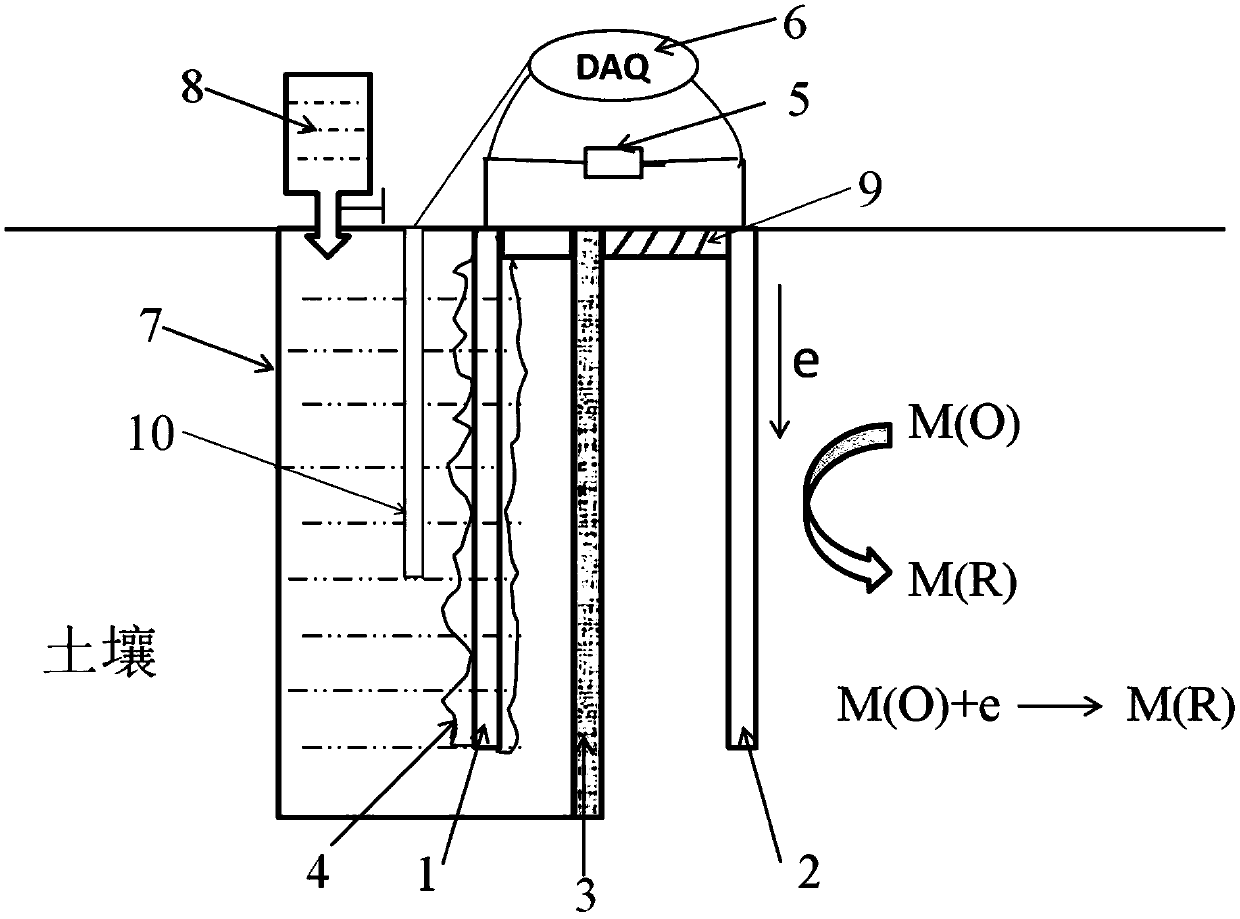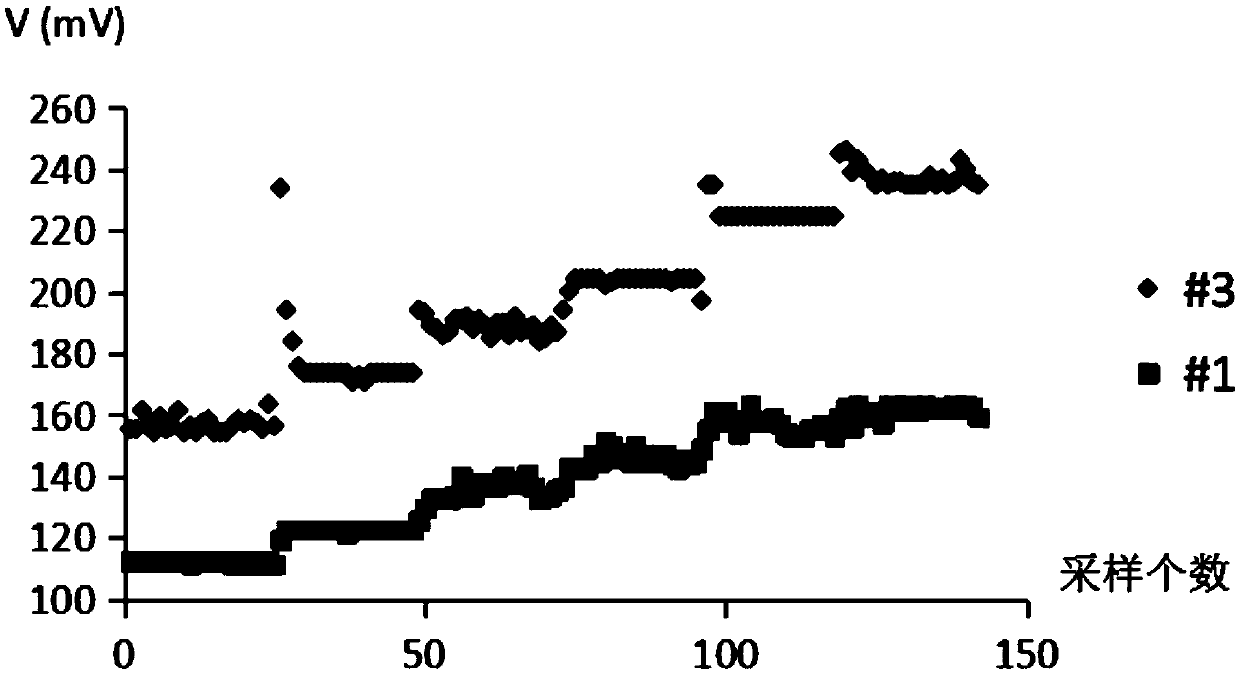Soil heavy metal in-situ monitor
A monitoring instrument and heavy metal technology, which is applied in the field of soil monitoring and treatment, can solve the problems of cumbersome treatment process, difficult in-situ monitoring of heavy metals, and long time consumption
- Summary
- Abstract
- Description
- Claims
- Application Information
AI Technical Summary
Problems solved by technology
Method used
Image
Examples
Embodiment 1
[0062] The structure of the soil heavy metal in-situ monitor of the present embodiment is as follows: figure 1 As shown, it includes a single-chamber bioelectrochemical sensing system and controller.
[0063] Among them, the single-chamber bioelectrochemical sensing system includes an anode 1, a cathode 2, an anode chamber 7 and a proton exchange membrane (PEM, Nafion 117) 3, the anode 1 is graphite felt, the cathode 2 is carbon cloth, and the anode chamber 7 is five A cavity made of surface acrylic material, which contains microorganisms and anolyte.
[0064] The anode 1 is arranged outside the anode chamber 7 and is connected to it via a wire, the proton exchange membrane 3 is interposed between the anode 1 and the cathode 2, and the anode 1, the proton exchange membrane 3 and the cathode 2 are pressed together and arranged in the anode chamber 7 outside, and connected and sealed with the cavity and the mouth-shaped end plate through a rubber gasket. The opening of the end...
Embodiment 2
[0069] The structure of the soil heavy metal in-situ monitor of the present embodiment is as follows: figure 2 As shown, it includes a single-chamber bioelectrochemical sensing system and controller.
[0070] Among them, the single-chamber bioelectrochemical sensing system includes an anode 1, a cathode 2, an anode chamber 7 and a proton exchange membrane (PEM) 3, the anode 1 is graphite felt, the cathode 2 is a carbon rod, and the anode chamber 7 is made of five-sided acrylic material chamber, which contains microorganisms and anolyte.
[0071] The anode 1 is arranged in the anode chamber 7 , and the proton exchange membrane 3 closes the cavity of the anode chamber 7 . The cathode 2 is located outside the anode chamber 7, and is connected to the anode chamber 7 by an adjustable length bracket 9, so as to adjust the distance between the anode and the cathode according to the conditions of the sample to be tested.
[0072] The controller includes an external resistance 5 and...
Embodiment 3
[0074] Embodiment 3 uses the monitoring instrument of embodiment 2 to monitor soil heavy metal content in situ
[0075] Inoculation and acclimatization: using the monitor in Example 2, two kinds of anaerobic sludge from sewage treatment plants are used to inoculate the anode of the monitor, and the anolyte with sodium acetate as the substrate is used for cultivation. After the anolyte is passed through nitrogen to remove the air, it is mixed with anaerobic sludge in the anode chamber, and the circuit between the anode and cathode is disconnected and connected after 2 days, and the concentration of sodium acetate is lower than 500mg / L to supplement the anolyte to maintain the concentration of sodium acetate at 500- Between 1000mg / L, after 3 weeks of inoculation and domestication, the open circuit voltages of the devices were measured to be 550mV and 620mV respectively, and the monitors started after domestication were obtained. for 1250 ohms and 1000 ohms.
[0076] The humidit...
PUM
 Login to View More
Login to View More Abstract
Description
Claims
Application Information
 Login to View More
Login to View More - R&D
- Intellectual Property
- Life Sciences
- Materials
- Tech Scout
- Unparalleled Data Quality
- Higher Quality Content
- 60% Fewer Hallucinations
Browse by: Latest US Patents, China's latest patents, Technical Efficacy Thesaurus, Application Domain, Technology Topic, Popular Technical Reports.
© 2025 PatSnap. All rights reserved.Legal|Privacy policy|Modern Slavery Act Transparency Statement|Sitemap|About US| Contact US: help@patsnap.com



